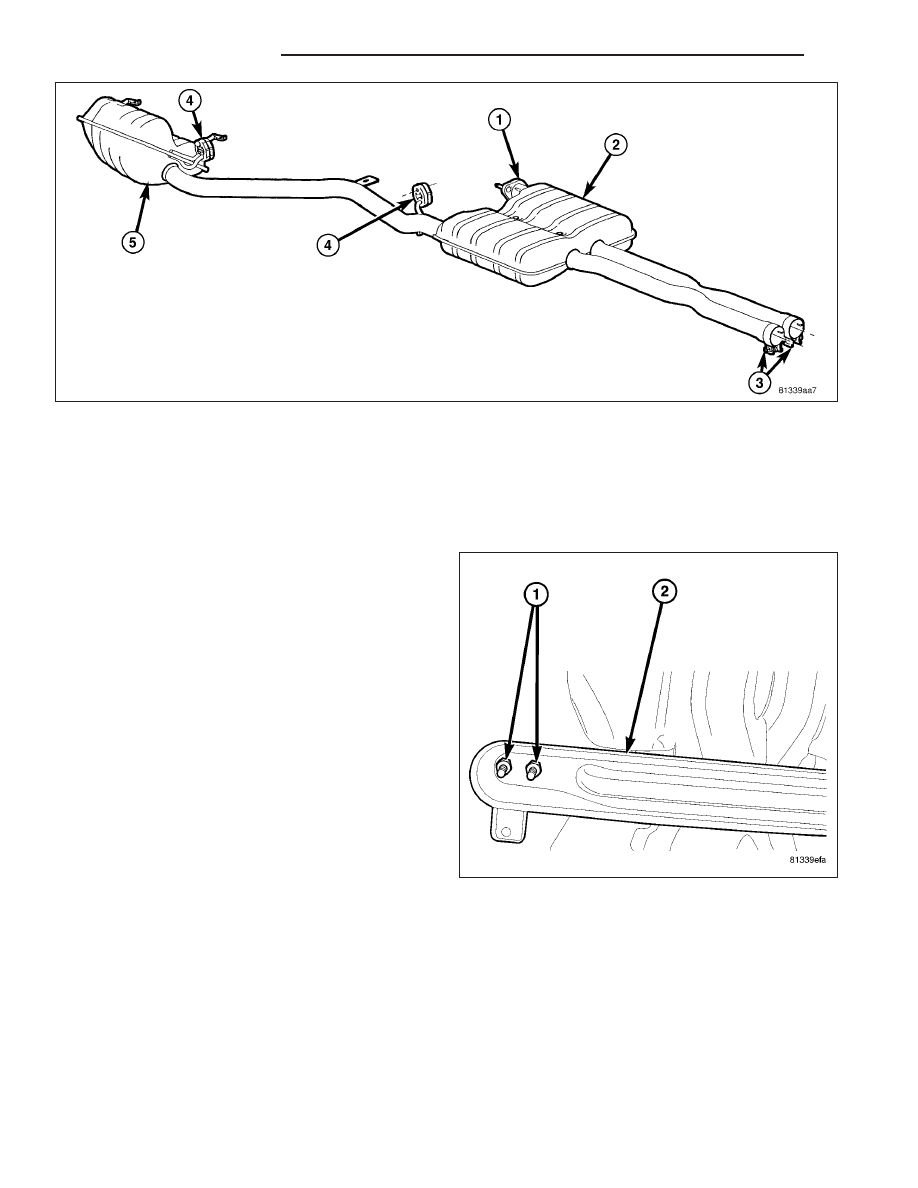Content .. 1694 1695 1696 1697 ..
Chrysler 300/300 Touring/300C, Dodge Magnum. Manual - part 1696

4. 5.7L/6.1L Engine - Install LH rear resonator and tailpipe assembly (Refer to 11 - EXHAUST SYSTEM/RESONA-
TOR - INSTALLATION).
NOTE: Check for proper alignment and clearance to underbody and engine compartment components
before tightening clamps.
5. Tighten band clamps to 61 N·m (45 ft. lbs.).
6. Install tunnel reinforcement (2) and nuts (1).
Tighten nuts to 25 N·m (215 in. lbs.)
7. Check clearance between muffler and resonator
assembly and fuel tank. Clearance is 14mm (.55
in.) for V8 engine and 16mm (.62 in.) for V6
engine.
8. Check clearance at rear tunnel reinforcement.
Clearance is 15 - 20mm (.59 - .78 in.).
9. The tailpipe should be centered in the rear fascia
opening.
10. Adjust clearance as necessary.
11. Lower vehicle.
12. Start the engine and inspect for exhaust leaks.
Repair exhaust leaks as necessary.
11 - 18
EXHAUST SYSTEM
LX